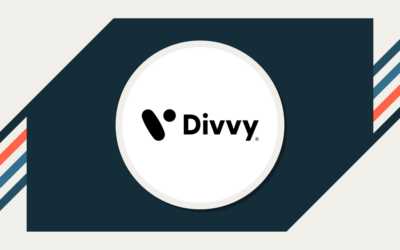60% of data breaches involve third-party vendors. And, according to Forbes, 47% of supplier collaborations fail. Are you gambling with your company’s future by neglecting vendor risk management?
What is vendor risk management?
Vendor risk management (VRM) is a business discipline in which organizations identify, assess, and mitigate risk associated with third-party vendors. It is a cornerstone component of a healthy overall risk management strategy to manage vendor risk effectively.
Vendor risk refers to the potential threats and vulnerabilities that arise from partnerships with third-party vendors. These partnerships put various aspects of your organization at risk, including:
- Data security.
- Regulatory compliance.
- Financial stability.
- Company reputation.
Since vendor risk is an inherent part of any business relationship with third parties, organizations must have a robust vendor risk management program in place.
Brief history of vendor risk management
The first vendor risk management practices involved the financial and operational risks associated with vendor partnerships. As technology advanced and the business landscape became more complex, the scope of vendor risk management broadened to include cybersecurity, data privacy, and stringent regulatory compliance.
Today, in the aftermath of high-profile data breaches and cyberattacks, vendor risk management is a comprehensive and necessary discipline encompassing a range of responsibilities supported by sophisticated software like Airbase and best practices.
Importance of third-party risk management.
What makes vendor risk management important to businesses is its essential role in protecting an organization’s data, reputation, and assets. Cybercrime resulted in an estimated $320 billion in lost assets and damages, with experts putting that number at nearly $2 trillion by 2028.

Factors increasing average data breach costs. Source: 11 Best Vendor Risk Management Software Solutions (2025 Edition)
Effective third-party risk management practices and tech prevent these data leaks, cyberattacks, and potential damages. In some cases, VRM is less about protecting internal assets and more about remaining compliant with government and industry regulation standards.

AP Automation Tour
Explore 3-way matching in our AP Automation Product tour.
Types of vendor risks.
Third-party vendor risk takes various forms, each posing unique challenges to organizations. Pre-emptively addressing these risk types is a foundational component of your vendor risk management framework.
Third-party legal risks.
Third-party legal risks are potential legal liabilities that arise from any vendor relationship. These legal liabilities include:
- Breach of contract.
- Regulatory non-compliance.
- Intellectual property disputes.
Legal risks are a headache for businesses because litigation is often costly, legal action is time-consuming, and organizations face damage to their reputation, especially if they lose the case.
To avoid legal risk, stakeholders must conduct thorough due diligence, define clear contractual terms, continuously monitor vendor compliance, and frequently consult with legal experts.
Third-party reputational risks.
A brand’s reputation is critical for building trust — a vendor’s actions or failures translate to negative news. Vendors involved in unethical practices, poor manufacturing standards, or past data leaks pose unnecessary risks and negative publicity.
Reputational damage leads to a loss of customer trust, decreases company market value, and invites congressional investigation — like recent examples involving Boeing and TikTok. To mitigate reputational risk, carefully vet potential vendors, audit their activities, and establish clear expectations for ethical conduct and vendor performance.
Third-party financial risks.
Your vendor’s financial problems are your financial problems — third-party providers with poor fiscal health present financial risks should you partner with the wrong one. These financial risks impact a vendor’s ability to deliver goods or services, and include:
- Bankruptcy.
- Cash flow problems.
- Significant financial losses.
- Equipment and property repossessions.
- Defaulted lease agreements
Partnering with a vendor with financial health issues puts your overall business objectives in harm’s way, whether via missed deadlines, product shortages, or broken promises. To avoid financial pitfalls, conduct thorough financial assessments of your vendors, monitor their financial health with some regularity, and have a contingency plan to avoid disruptions.
The role of a vendor risk management program.
A VRM program is a structured approach to managing inherent risk that involves the identification, assessment, and mitigation of risks associated with third-party vendors. A VRM program should include policies, procedures, and controls to reduce vendor risks.
Vendor risk management strategies.
When creating a comprehensive vendor risk program, strategy is your friend. Several strategies improve your security posture, such as:
- Vendor risk assessments to evaluate the overall risk a vendor poses.
- Vendor financial assessments to mitigate third-party financial risks.
- Implement avoidance policies to block partnerships with problematic vendors.
- Build scope buffers to prevent data leaks.
- Deploy technology to identify and alert stakeholders of potential risks.
- On-going vendor monitoring and auditing to ensure compliance.
- Transfer risk to another third party (like cloud infrastructure).
- Continuously update procedures and policies to match the overall risk management strategy of your organization.
Simply put, your vendor risk management strategy should involve four primary considerations:
- Avoidance.
- Acceptance.
- Transference.
- Mitigation.
The workflows you implement and the partnerships you have with third parties must include these strategies to remain secure.
Top vendor risk management software solutions.
Businesses turn to software solutions from several providers to take an active stance to mitigate third-party risk. These tools offer features such as risk assessment, risk score ranking, and ongoing monitoring.
Here’s a quick glance at the top VRM software solutions currently available on the market:
Airbase: Complete procure-to-pay platform with tools to manage the entire buying cycle. Airbase’s intake process routes all requests for new vendor spend to Legal, InfoSec, Procurement, and/or IT for vetting and approval of the new vendor. Its portal makes it easy for vendors to upload critical documents like W-9s or SOC reports. Reporting and tracking lets you see what approvals and or documents needed to control risks may be missing.
UpGuard: Instant vendor insights and reporting on fourth parties. UpGuard offers end-to-end workflows and API integrations to build out a tech stack with individual components instead of an all-in-one package.
ProcessUnity: Information technology (IT) and cybersecurity-focused software designed to mitigate risks from third-party partners. ProcessUnity promises quicker due diligence and proper legal compliance for HIPAA, GDPR, and CCPA.
OneTrust: Tools for onboarding, assessment, reporting, and monitoring. OneTrust offers pre-built templates and customizable vendor assessments to gauge third-party activity and risk exposure.
The best way to choose a tool is to evaluate your specific needs and wants. For instance, ProcessUnity might be an ideal solution for a small tech startup, but an e-commerce enterprise might need a more comprehensive and complete solution like Airbase.
Airbase offers best-in-class vendor risk management tools, including data-driven insights into performance. Enforce strict controls over activities with inherent risks, like processing payments or material procurement. Request a demo today and see our risk management tools in action!
Benefits of vendor risk management.
Effective vendor risk management can also help organizations reduce costs and improve efficiency.
With security and privacy a growing component of most modern software, it’s impossible not to wonder about what benefits a VRM platform has to offer. From better customer relationships to potential long-term cost savings, look for these benefits when you incorporate a VRM platform into your tech stack:
- Improved security posture.
- Reduced compliance risk.
- Enhanced vendor relationships.
- Stronger customer trust and brand recognition.
- Lower legal risks.
- Ensured business continuity.
Recognizing various types of security risks, including cybersecurity and regulatory compliance risks, is essential in the decision-making process when assessing vendors. The benefits encompass financial and reputational aspects, owing to the overwhelming business case you have for investing in VRM programs and software.
Reduce your vendor risk with Airbase.
Vendor risk management, along with its associated programs and software, is where businesses analyze, address, and mitigate the risks that come with third-party partners. Business processes, such as vendor risk surveys and due diligence, contribute to effective vendor risk management practices.
Whether you’re a small business with a few customers per month or a global enterprise responsible for billions of dollars, vendor management must be part of your toolkit. With Airbase, every vendor — large or small — will be vetted by the trained professionals in your organization. Critical documentation like SOC reports can be easily collected, reviewed, and maintained.
If a vendor changes critical information like bank account details, Airbase will alert you of that change before a payment goes out. Spend analytics in Airbase let you create spending reports at the vendor level so that you can track which vendors you’re paying the most to. Rest assured knowing that Airbase has your back on managing vendor risk.
Ready for a comprehensive procure-to-pay tool built with vendor risk management in mind? Schedule your demo with Airbase and start enjoying a better way to manage your business!
Vendor risk management FAQ.
Read some common vendor risk management questions and their answers!
How does a vendor risk management program improve an organization’s security posture?
A vendor risk management program establishes a framework for businesses to identify, assess, and mitigate risks associated with third-party vendors. Using a structured approach to manage vendor risk, companies significantly enhance their overall security posture. As a result, organizations better protect themselves against potential cybersecurity risks, data leaks, and security threats that arise from their vendor ecosystem.
What are the key components of an effective third-party risk management strategy?
An effective third-party risk management strategy encompasses crucial elements, including risk identification, risk assessment, due diligence, control implementation, continuous monitoring, and vendor lifecycle management.
How can vendor risk management solutions streamline the risk assessment process?
Vendor risk management solutions offer numerous benefits, such as:
- Centralized vendor inventory.
- Automated risk scoring.
- Customizable questionnaires.
- Evidence collection.
- Workflow automation.
- Real-time reporting and automation.
Leveraging these features allows organizations to reduce manual effort, minimize repetitive tasks, and gain a complete picture of their vendor risk landscape.
What role does continuous monitoring play in managing vendor risks?
Continuous monitoring involves real-time risk tracking that regularly assesses vendor performance and security posture to identify any changes in risk levels. It also means receiving automated alerts when vendors experience security incidents or significant changes in their risk profile.
Other roles include compliance verification, which ensures vendors maintain regulatory certifications, and performance evaluations through pre-established KPIs found within your service level agreements (SLAs).
 Jira Integration – Streamline Your Workflows
Jira Integration – Streamline Your Workflows  Ironclad Integration – Simplify Legal Operations
Ironclad Integration – Simplify Legal Operations  Asana
Asana 




